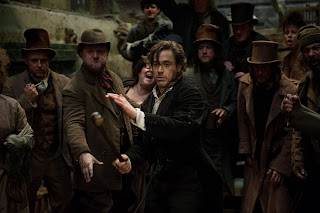Camera
1. Establishing shot: the opening shot which establishes where the people in the scene are.
2. Two-shot: A shot in which two figures appear in the frame.
3. Point of view shot: A camera angle in which the viewer seems to see with the eyes of a character in the scene.
4. Over the shoulder shot: A camera shot in which the subject of the shot is filmed from behind a persons head and shoulders, which are framed to one side in the foreground.
5. High angle shot: A camera shot taken from a higher level than the subject, and angled down towards them. this shot can have the effect of diminishing the authority of the subject, making
them look powerful.
6. Low-angle shot: A camera shot taken from a lower level than the subject, and angled up at them. this shot can have the effect of enhancing the authority of the subject, making them look powerful.
7. Canted angle: A cinematic device where the camera is physically places at an angle so that vertical and horizontal surfaces appear diagonal.
8. Pan: A horizontal camera movement left-to-right or right-to-left on a fixed axis. the word is short for "panoramic movement". A pan following a moving object suggests that we are viewing it from the point of view of an observer.
9. Tilt: A camera movement up or down on a horizontal axis.
10. Tracking shot: A camera movement achieved by mounting the camera on a dolly and moving it along a track. Typically, tracking shots are used to follow characters or other objects in motion.
11. Diegetic sound: Sound that can be heard by the characters in the world of the film.
12. Non-diegetic sound: Sound that cannot be heard the characters in the world of the film.
13. Synchronous sound: Sound that is directly matched with what is being viewed.
14. Sound bridge: Editing technique in which visual cuts are deliberately not matched with audio cuts. For example, the editor may cut to a completely new scene, but allow sound from the preceding scene to run on for a short time. Alternatively, we may hear the sound of the next scene before we see it.
15. Dialogue: The conversation that happens between characters in a work of fiction, or the lines spoken by actors.
16. Voice over: A type of none-diegetic, asynchronous sound in which the audience hear a voice that does not have a source either withing the frame or within hearing distance and which is not heard by the people on screen.
17. Incidental music: Music used in a film or play as a background to create or enhance a particular atmosphere.
18. A short musical phrase primarily used as form of punctuation.
19. Ambient sound: Sound which is natural to a setting.
Mise en scene
20. Mise-en-scene: The look of a film, derived from its use of sets and settings, lighting, colour, costumes, hair and make-up, props, actor movement, and the overall placement and visual composition of theses elements by the director.
21. Location: A "real" place, as opposed to a studio, in which something is filmed or otherwise recorded. A location might be a New York City street or a desert.
22. Set: An interior that has been constructed to look like a real place when filmed; the set helps to identify the time and place in which a narrative will unfold.
23. Costume: The clothes worn by characters in a fictional text. The costumes are part of the mise en scene and as such are an important part of signification (for example, as a generic or period identifier).
24. Make-up: Cosmetics used to change the appearance of a performer.
25. Prop: Short for "property". A small item used in a film or TV production to add realism, assist with the narrative or act as a motif.
26. High-key lighting: Lighting which eliminates most of the shadows.
27. Low-key lighting: Lighting which emphasizes shadows.
Editing
28. Cut: The commonest form of edit in moving image texts, this is the instantaneous change from one shot to another in an edit.
29. Shot/reverse shot: A convention for showing a dialogue sequence. We cut between the two speakers, showing each person's point of view.
30. Eye-line match: A visual code used to make it clear what the subject is looking at.
31. Graphic match: A compositional device onscreen, whereby objects of common characteristics of shape or colour are used in successive shots.
32. Match on action; Two shots in which an action begun in the first is completed in the second, thus disguising the fact that there has been a cut.
33. Dissolve: In editing, a cross-fade between two shots: one fades out as another fades in.
34. Wipe: A shot transition in which a new image wipes over the previous one.
35. Superimposition: To place one image over the top of another on the screen.
36. long take: Not to be confused with long shot, a long take is a shot of comparatively long duration.
37. Montage: The production of a rapid succession of images in a motion picture, usually accompanied by music, to illustrate and association of ideas or a passing of time.
38. Post-production: The various processes that take place after filming in order to create the final cut of a film.




